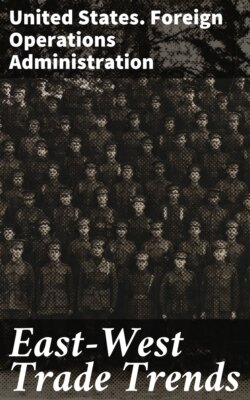Читать книгу East-West Trade Trends - United States. Foreign Operations Administration - Страница 14
На сайте Литреса книга снята с продажи.
Khrushchev and the Livestock Lag
ОглавлениеTable of Contents
On the condition of agriculture, Nikita S. Khrushchev had a great deal to say at a session of the Communist Party’s Central Committee on September 7. Khrushchev is the First Secretary of the Party. His speech was an even more dismal confession of the “serious lag” than Malenkov’s. He revealed that the Soviet Union had 10 million fewer cattle at the beginning of 1953 than in 1928, and that the number fell by 2,200,000 during 1952 alone, instead of increasing by that same number as planned. In biting words he described the sharp decline in pork production and in wool, the unsatisfactory fodder situation, the deficiencies in potatoes and vegetables. His speech showed beyond doubt that even the production of grain, traditionally the Soviet Union’s No. 1 food staple and No. 1 export commodity, was in bad shape and that a far greater acreage needed to be devoted to feed grains in order to bolster the faltering livestock industry.
Khrushchev listed a number of measures to raise production. They included higher farm prices for livestock, milk, butter, and vegetables; the reduction of obligatory deliveries from the small private plots still held by collective farm members; the assignment of more tractors and more skilled workers to the collective farms; and the tightening of Communist Party control over agriculture. The decisions to place greater reliance on material incentives and to give slightly more recognition to what remains of private enterprise were intriguing, but the collective farm system itself remained basically unchanged.
Students of the Soviet economy, surveying previous efforts to stimulate agriculture and especially mindful of the biological limitations on the reproduction of livestock, were doubtful that the new measures could bring anything like the planned increase in 1954 or 1955.
